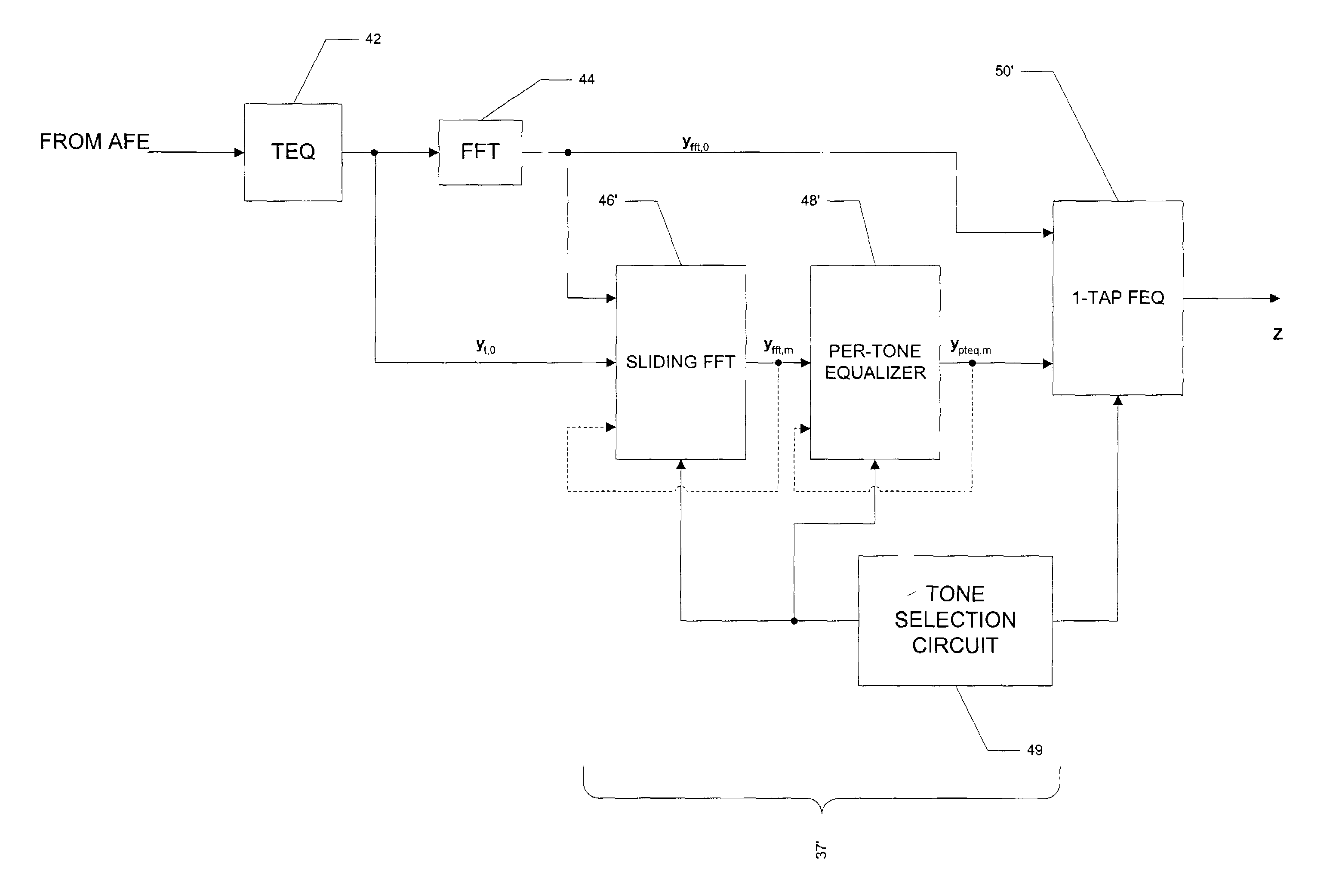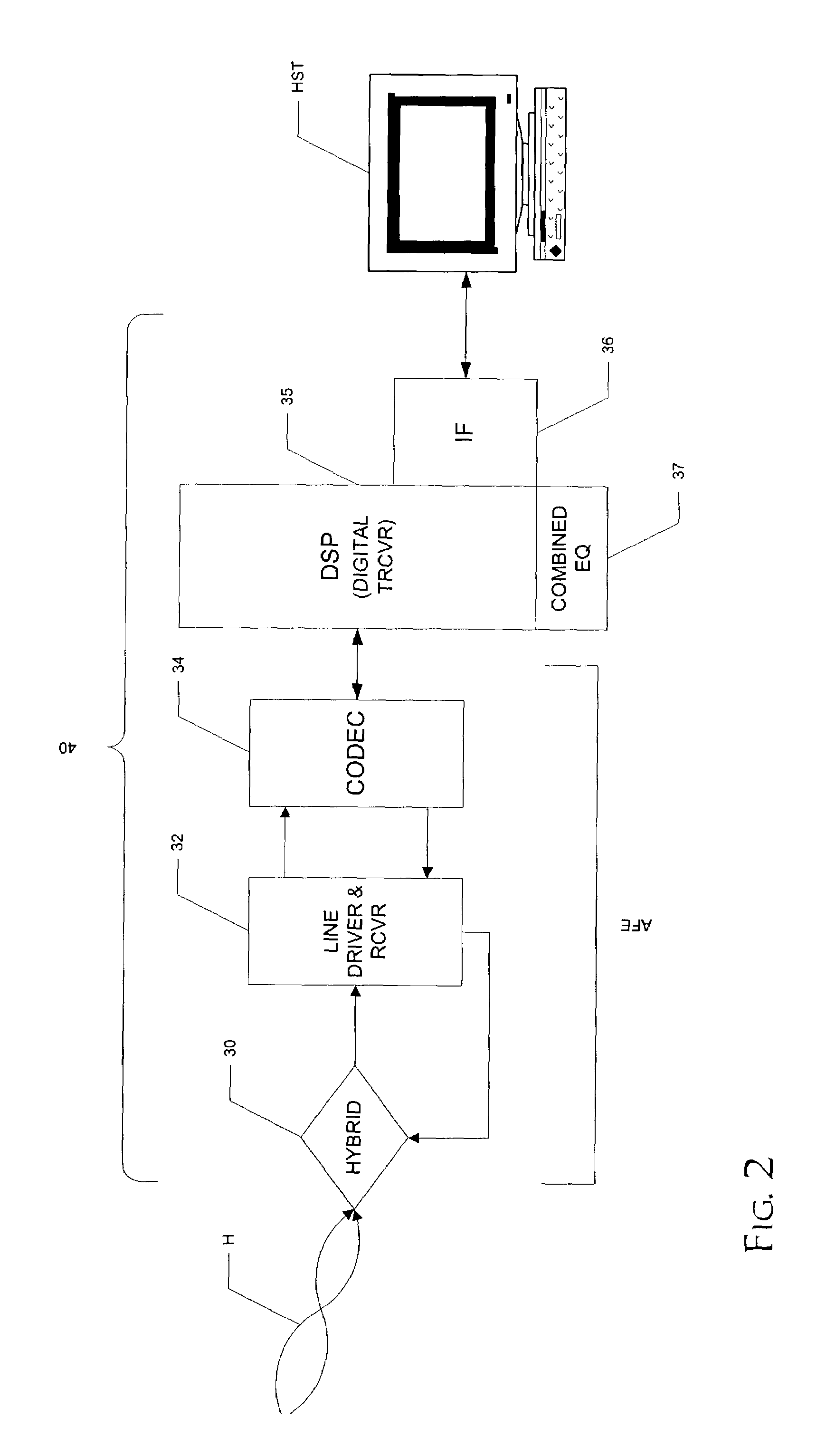Combined equalization for DMT-based modem receiver
a modem receiver and equalization technology, applied in the field of multi-carrier modulation communication, can solve the problems of loss of orthogonality among the receivers, the non-ideal impulse response of the transmission channel, and the poor snr of some subchannels
- Summary
- Abstract
- Description
- Claims
- Application Information
AI Technical Summary
Benefits of technology
Problems solved by technology
Method used
Image
Examples
Embodiment Construction
[0048]The present invention will be described in connection with an example of its implementation in a transceiver, such as a Digital Subscriber Line (DSL) modem. It will be apparent to those skilled in the art having reference to this specification that this invention is particularly well-suited for use in such an application. However, it is also contemplated that this invention will be of similar benefit in many other applications that involve discrete multitone modulation (DMT), including both land line and wireless communications. It is therefore to be understood that these and other alternatives to the embodiment described below are contemplated to be within the scope of the invention as claimed.
[0049]In this regard, and referring now to FIG. 2, an example of the construction of receiving modem 40 according to the preferred embodiments of the invention will now be described. Modem 40 in this example is in the form of a transceiver (i.e., for both transmitting and receiving) for...
PUM
 Login to View More
Login to View More Abstract
Description
Claims
Application Information
 Login to View More
Login to View More - R&D
- Intellectual Property
- Life Sciences
- Materials
- Tech Scout
- Unparalleled Data Quality
- Higher Quality Content
- 60% Fewer Hallucinations
Browse by: Latest US Patents, China's latest patents, Technical Efficacy Thesaurus, Application Domain, Technology Topic, Popular Technical Reports.
© 2025 PatSnap. All rights reserved.Legal|Privacy policy|Modern Slavery Act Transparency Statement|Sitemap|About US| Contact US: help@patsnap.com



